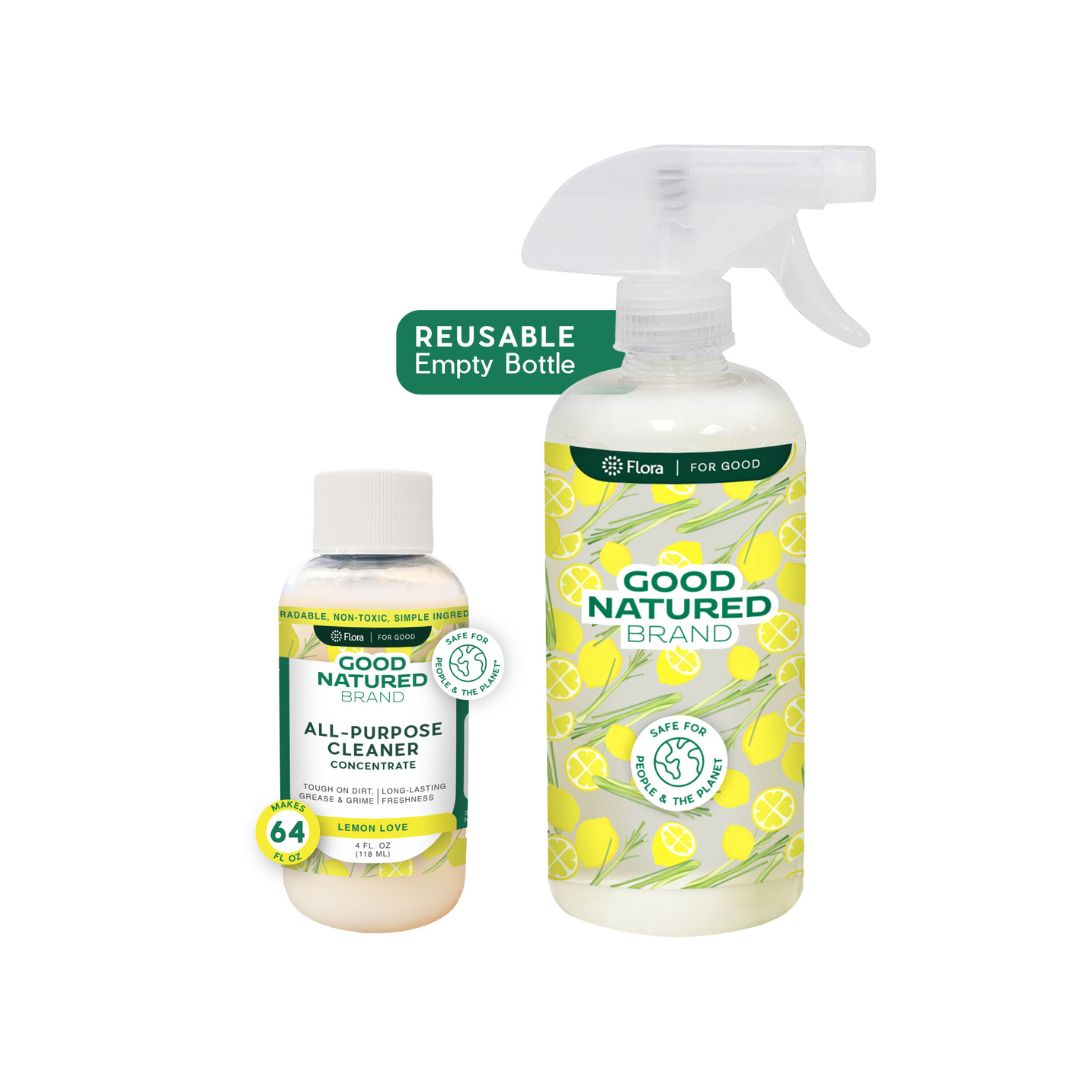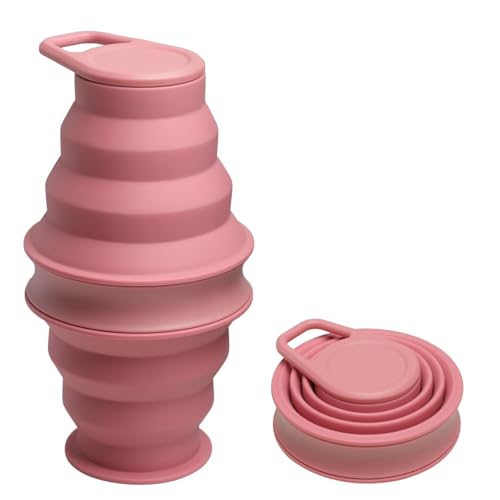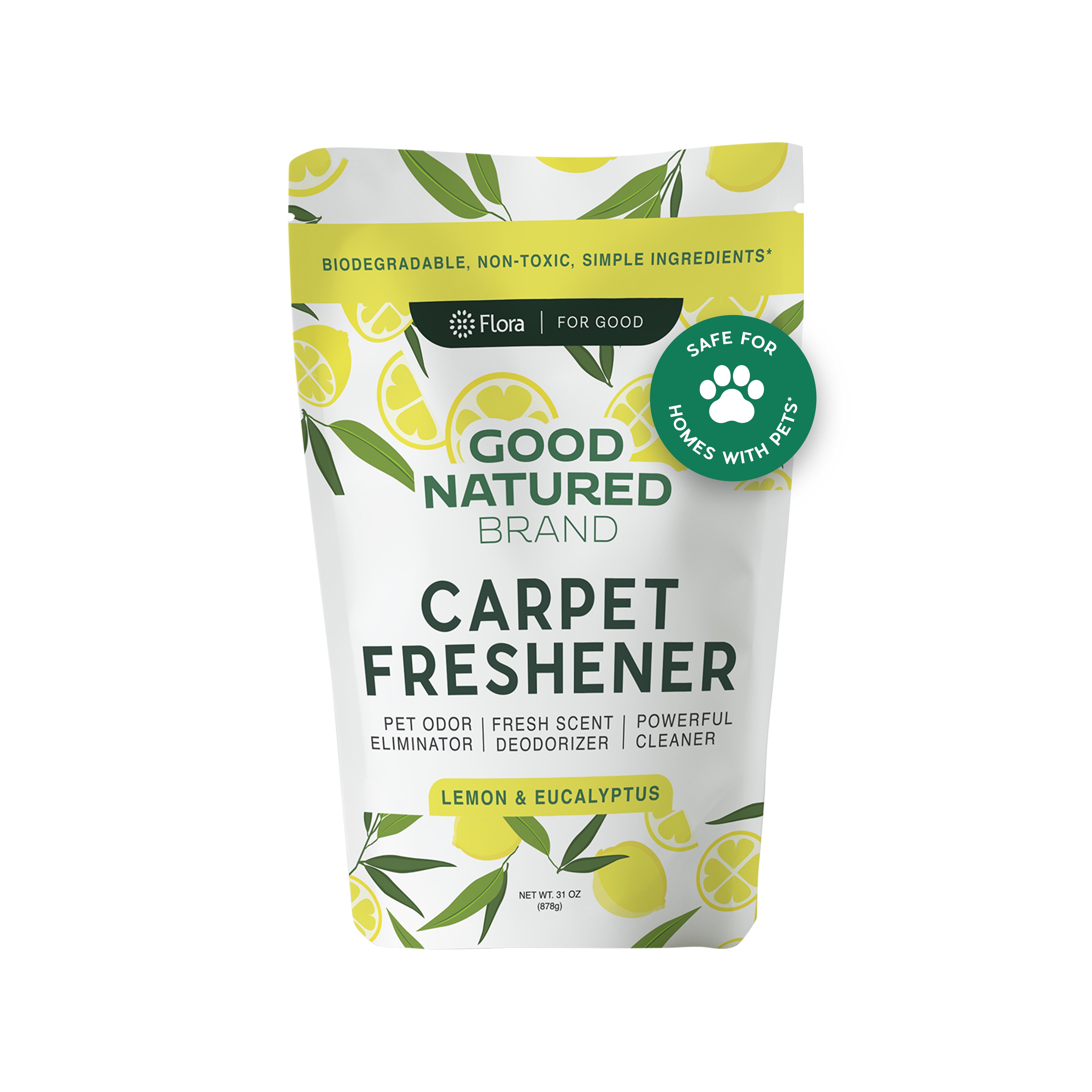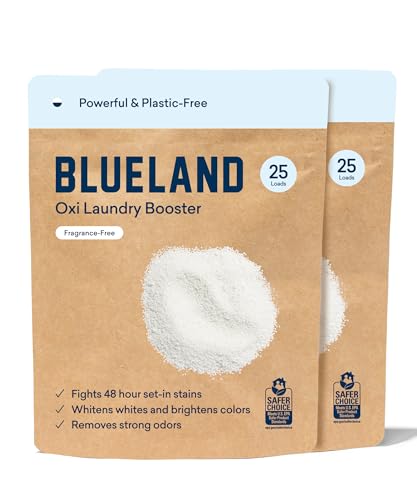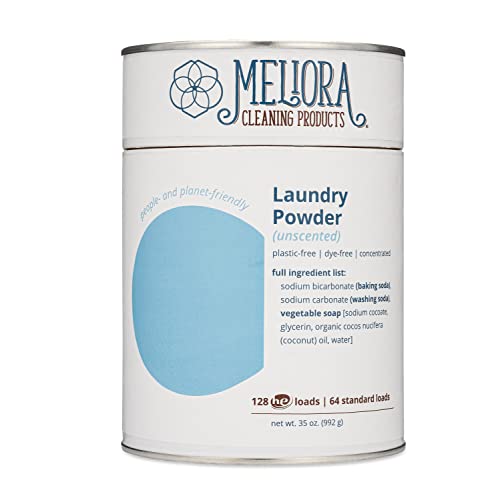
ECOS Dish Soap - Powerful Grease Cutter, Hypoallergenic & Biodegradable, Grapefruit - 2 Pack


Cocamidopropyl Betaine
High RiskCocamidopropyl betaine is a synthetic surfactant derived from coconut oil, commonly used in personal care products for its mild cleansing and foaming properties. It functions as a surfactant, emulsifier, and thickening agent, contributing to the texture and performance of formulations.
Sustai Insights
Cocamidopropyl betaine offers functional benefits as a gentle surfactant, enhancing product foaming and texture. However, it may pose low to moderate allergenic risks and is subject to high use restrictions due to contamination concerns. Regulatory bodies have advised on its safe levels of usage, categorizing its risk level as high overall. Users should practice caution, particularly with sensitive populations, and consider alternatives like naturally derived surfactants for safer formulations.
Phenoxyethanol
Medium RiskPhenoxyethanol is a preservative used in cosmetics and personal care products to prevent microbial growth and extend shelf life. It is commonly found in formulations such as lotions, creams, and serums.
Sustai Insights
Phenoxyethanol serves effectively as a preservative, ensuring product stability and safety by inhibiting microbial growth. It is considered to have low health risks regarding carcinogenicity, allergies, and reproductive toxicity. However, moderate use restrictions exist, and regulatory bodies have advised caution in specific applications. Environmental concerns include its potential as a pollutant, although it is not highly bioaccumulative. Overall, the ingredient presents a medium risk level, with safe usage practices recommended and alternative preservatives available for those seeking greener options.
Citric Acid
Medium RiskCitric acid is an alpha hydroxy acid used in personal care products primarily for its role as a pH adjuster and natural preservative. It occurs naturally in citrus fruits and is commonly utilized in various formulations for its chelating properties and mild exfoliation benefits.
Sustai Insights
Citric acid offers functional benefits as an effective preservative and pH stabilizer, contributing to product longevity and stability. It is biodegradable and derived from renewable sources. Health risks are low, with minimal concerns regarding carcinogenicity, allergies, and reproductive toxicity. However, moderate use restrictions exist due to potential irritation at high concentrations. Environmental risks are limited, as citric acid is not known to accumulate in ecosystems. Regulatory agencies have no significant advisories against its use. Overall, it is assessed as a medium-risk ingredient, with safe usage practices recommended and alternatives available.
Triethylhexyl Citrate
Low RiskTriethylhexyl citrate is a triester of 2-ethylhexanoic acid and glycerin. It functions primarily as a skin-conditioning agent and emollient in cosmetic formulations, enhancing the texture and feel of products while providing moisture retention.
Sustai Insights
Triethylhexyl citrate offers functional benefits as a skin-conditioning agent, promoting moisture retention and product stability. It is considered to have low health risks, including negligible concerns regarding carcinogenicity, allergies, and reproductive toxicity. Environmentally, it poses minimal pollution risk and is not bioaccumulative. Regulatory assessments indicate no significant concerns, affirming its low-risk status overall. Safe usage practices are recommended, and while safer alternatives exist, this ingredient remains a suitable choice in formulations.
Sorbitan Olivate
Low RiskSorbitan olivate is a surfactant derived from olive oil and sorbitol. It functions primarily as an emulsifier, allowing for the mixing of oil and water in cosmetic formulations. It is commonly found in creams and lotions, enhancing texture and stability.
Sustai Insights
Sorbitan olivate offers functional benefits as an emulsifier, improving product texture and stability while being derived from a sustainable source. Health risks are low, with no significant concerns regarding carcinogenicity, allergies, or reproductive toxicity. Environmentally, it is not known to bioaccumulate or contribute to pollution. Regulatory bodies have not identified restrictions, indicating a favorable risk level. For safe usage, it is recommended in standard cosmetic formulations, with few alternatives necessary given its low-risk profile.
Cocamidopropylamine Oxide
Low RiskCocamidopropylamine oxide is a tertiary amine derived from coconut oil, commonly used as a surfactant and foam booster in cosmetic and personal care products. It helps enhance the cleansing properties of formulations and improves the texture of products such as shampoos and body washes.
Sustai Insights
Cocamidopropylamine oxide offers functional benefits as an effective surfactant, enhancing product performance while being derived from renewable coconut sources, which supports sustainability. Health risks are minimal, with low concerns regarding carcinogenicity, allergies, or reproductive toxicity. Environmental risks are also low, with no significant pollutant potential noted. Regulatory assessments indicate no severe restrictions. Overall, this ingredient is considered low risk, promoting safe use in personal care formulations.
Tetrasodium Glutamate Diacetate
Low RiskTetrasodium glutamate diacetate is a sodium salt of glutamic acid, primarily functioning as a chelating agent in various cosmetic and personal care products. It helps stabilize formulations by binding metal ions, thereby enhancing product efficacy and shelf life.
Sustai Insights
Tetrasodium glutamate diacetate is recognized for its functional benefits in stabilizing formulations and preventing metal ion interference. It poses low health risks, with minimal concerns regarding carcinogenicity, allergies, or reproductive toxicity. Environmental impacts are also low, with no significant pollutant or bioaccumulation concerns noted. Regulatory bodies do not impose severe restrictions on its use. Overall, it is considered a low-risk ingredient. Safe usage practices should be followed, and alternatives such as other chelating agents may be explored for specific formulations.
Sodium Coco Sulfate
Low RiskSodium coco-sulfate is a sodium salt of the fatty acids derived from coconut oil. It primarily functions as a surfactant and cleansing agent in cosmetic formulations, helping to create lather and remove dirt and oils from the skin and hair.
Sustai Insights
Sodium coco-sulfate offers effective cleansing properties and is often considered biodegradable, contributing to its sustainability credentials. Health risks are minimal, with low concerns for carcinogenicity, allergies, and reproductive toxicity. Environmental risks are also low, excluding significant pollutant potential. Regulatory bodies have not issued major restrictions, confirming its safety for use. Overall, it is assessed with a low risk level. For those seeking alternatives, other milder surfactants like decyl glucoside may be considered.
Ethylhexylglycerin
Low RiskEthylhexylglycerin is a glyceryl ether utilized primarily as a skin-conditioning agent and preservative in cosmetic formulations. It enhances the efficacy of preservatives and serves as a humectant, helping to retain moisture in the skin. This ingredient is commonly found in various personal care products.
Sustai Insights
Ethylhexylglycerin offers functional benefits as an effective preservative and skin-conditioning agent, contributing to product longevity and moisture retention. Health risks are generally low, with minor concerns regarding allergic contact dermatitis and irritant potential. Environmentally, it poses minimal risks, not being recognized as a pollutant or bioaccumulative. Regulatory bodies have imposed few restrictions, indicating its safety for use. Overall, its risk level is assessed as low, making it a viable option in cosmetic formulations. For those seeking alternatives, ingredients like propanediol may serve similar functions with potentially lower irritation profiles.
Water
Low RiskWater is a clear, colorless liquid essential for various biological processes. It serves as a solvent in formulations, facilitating the dissolution of other ingredients and enhancing product texture and application. Additionally, water plays a crucial role in hydration and is a key component in many cosmetic and personal care products.
Sustai Insights
Water is an effective solvent and hydrator, contributing to the texture and efficacy of formulations. It is biodegradable and generally regarded as safe, with low concerns regarding carcinogenicity, allergies, and reproductive toxicity. However, excessive water usage can lead to environmental concerns, particularly regarding resource depletion. Regulatory bodies do not impose restrictions on water use in cosmetics. Overall, the risks associated with water are low, making it a safe and essential ingredient.
Lauramine Oxide
Low RiskLauramine oxide is a tertiary amine oxide used primarily as a surfactant and emulsifier in cosmetic formulations. It functions to enhance the texture and stability of products, making it suitable for a variety of applications, including cleansers and conditioners.
Sustai Insights
Lauramine oxide offers functional benefits as a surfactant, improving product texture and efficacy. It is generally considered low-risk regarding health concerns, with minimal associations with carcinogenicity, allergies, or reproductive toxicity. Environmental impact is also low, as it does not contribute significantly to pollution or bioaccumulation. Regulatory oversight indicates no major restrictions. For safe use, it is advisable to adhere to standard concentrations in formulations. Overall, lauramine oxide is a low-risk ingredient in cosmetics.
Triethylhexyl Citrate
Low RiskTriethylhexyl citrate is a triester of 2-ethylhexanoic acid and glycerin. It functions primarily as a skin-conditioning agent and emollient in cosmetic formulations, enhancing the texture and feel of products while providing moisture retention.
Sustai Insights
Triethylhexyl citrate offers functional benefits as a skin-conditioning agent, promoting moisture retention and product stability. It is considered to have low health risks, including negligible concerns regarding carcinogenicity, allergies, and reproductive toxicity. Environmentally, it poses minimal pollution risk and is not bioaccumulative. Regulatory assessments indicate no significant concerns, affirming its low-risk status overall. Safe usage practices are recommended, and while safer alternatives exist, this ingredient remains a suitable choice in formulations.
Sorbitan Olivate
Low RiskSorbitan olivate is a surfactant derived from olive oil and sorbitol. It functions primarily as an emulsifier, allowing for the mixing of oil and water in cosmetic formulations. It is commonly found in creams and lotions, enhancing texture and stability.
Sustai Insights
Sorbitan olivate offers functional benefits as an emulsifier, improving product texture and stability while being derived from a sustainable source. Health risks are low, with no significant concerns regarding carcinogenicity, allergies, or reproductive toxicity. Environmentally, it is not known to bioaccumulate or contribute to pollution. Regulatory bodies have not identified restrictions, indicating a favorable risk level. For safe usage, it is recommended in standard cosmetic formulations, with few alternatives necessary given its low-risk profile.
Cocamidopropylamine Oxide
Low RiskCocamidopropylamine oxide is a tertiary amine derived from coconut oil, commonly used as a surfactant and foam booster in cosmetic and personal care products. It helps enhance the cleansing properties of formulations and improves the texture of products such as shampoos and body washes.
Sustai Insights
Cocamidopropylamine oxide offers functional benefits as an effective surfactant, enhancing product performance while being derived from renewable coconut sources, which supports sustainability. Health risks are minimal, with low concerns regarding carcinogenicity, allergies, or reproductive toxicity. Environmental risks are also low, with no significant pollutant potential noted. Regulatory assessments indicate no severe restrictions. Overall, this ingredient is considered low risk, promoting safe use in personal care formulations.
Tetrasodium Glutamate Diacetate
Low RiskTetrasodium glutamate diacetate is a sodium salt of glutamic acid, primarily functioning as a chelating agent in various cosmetic and personal care products. It helps stabilize formulations by binding metal ions, thereby enhancing product efficacy and shelf life.
Sustai Insights
Tetrasodium glutamate diacetate is recognized for its functional benefits in stabilizing formulations and preventing metal ion interference. It poses low health risks, with minimal concerns regarding carcinogenicity, allergies, or reproductive toxicity. Environmental impacts are also low, with no significant pollutant or bioaccumulation concerns noted. Regulatory bodies do not impose severe restrictions on its use. Overall, it is considered a low-risk ingredient. Safe usage practices should be followed, and alternatives such as other chelating agents may be explored for specific formulations.
Cocamidopropyl Betaine
High RiskCocamidopropyl betaine is a synthetic surfactant derived from coconut oil, commonly used in personal care products for its mild cleansing and foaming properties. It functions as a surfactant, emulsifier, and thickening agent, contributing to the texture and performance of formulations.
Sustai Insights
Cocamidopropyl betaine offers functional benefits as a gentle surfactant, enhancing product foaming and texture. However, it may pose low to moderate allergenic risks and is subject to high use restrictions due to contamination concerns. Regulatory bodies have advised on its safe levels of usage, categorizing its risk level as high overall. Users should practice caution, particularly with sensitive populations, and consider alternatives like naturally derived surfactants for safer formulations.
Sodium Coco Sulfate
Low RiskSodium coco-sulfate is a sodium salt of the fatty acids derived from coconut oil. It primarily functions as a surfactant and cleansing agent in cosmetic formulations, helping to create lather and remove dirt and oils from the skin and hair.
Sustai Insights
Sodium coco-sulfate offers effective cleansing properties and is often considered biodegradable, contributing to its sustainability credentials. Health risks are minimal, with low concerns for carcinogenicity, allergies, and reproductive toxicity. Environmental risks are also low, excluding significant pollutant potential. Regulatory bodies have not issued major restrictions, confirming its safety for use. Overall, it is assessed with a low risk level. For those seeking alternatives, other milder surfactants like decyl glucoside may be considered.
Phenoxyethanol
Medium RiskPhenoxyethanol is a preservative used in cosmetics and personal care products to prevent microbial growth and extend shelf life. It is commonly found in formulations such as lotions, creams, and serums.
Sustai Insights
Phenoxyethanol serves effectively as a preservative, ensuring product stability and safety by inhibiting microbial growth. It is considered to have low health risks regarding carcinogenicity, allergies, and reproductive toxicity. However, moderate use restrictions exist, and regulatory bodies have advised caution in specific applications. Environmental concerns include its potential as a pollutant, although it is not highly bioaccumulative. Overall, the ingredient presents a medium risk level, with safe usage practices recommended and alternative preservatives available for those seeking greener options.
Ethylhexylglycerin
Low RiskEthylhexylglycerin is a glyceryl ether utilized primarily as a skin-conditioning agent and preservative in cosmetic formulations. It enhances the efficacy of preservatives and serves as a humectant, helping to retain moisture in the skin. This ingredient is commonly found in various personal care products.
Sustai Insights
Ethylhexylglycerin offers functional benefits as an effective preservative and skin-conditioning agent, contributing to product longevity and moisture retention. Health risks are generally low, with minor concerns regarding allergic contact dermatitis and irritant potential. Environmentally, it poses minimal risks, not being recognized as a pollutant or bioaccumulative. Regulatory bodies have imposed few restrictions, indicating its safety for use. Overall, its risk level is assessed as low, making it a viable option in cosmetic formulations. For those seeking alternatives, ingredients like propanediol may serve similar functions with potentially lower irritation profiles.
Citric Acid
Medium RiskCitric acid is an alpha hydroxy acid used in personal care products primarily for its role as a pH adjuster and natural preservative. It occurs naturally in citrus fruits and is commonly utilized in various formulations for its chelating properties and mild exfoliation benefits.
Sustai Insights
Citric acid offers functional benefits as an effective preservative and pH stabilizer, contributing to product longevity and stability. It is biodegradable and derived from renewable sources. Health risks are low, with minimal concerns regarding carcinogenicity, allergies, and reproductive toxicity. However, moderate use restrictions exist due to potential irritation at high concentrations. Environmental risks are limited, as citric acid is not known to accumulate in ecosystems. Regulatory agencies have no significant advisories against its use. Overall, it is assessed as a medium-risk ingredient, with safe usage practices recommended and alternatives available.
Water
Low RiskWater is a clear, colorless liquid essential for various biological processes. It serves as a solvent in formulations, facilitating the dissolution of other ingredients and enhancing product texture and application. Additionally, water plays a crucial role in hydration and is a key component in many cosmetic and personal care products.
Sustai Insights
Water is an effective solvent and hydrator, contributing to the texture and efficacy of formulations. It is biodegradable and generally regarded as safe, with low concerns regarding carcinogenicity, allergies, and reproductive toxicity. However, excessive water usage can lead to environmental concerns, particularly regarding resource depletion. Regulatory bodies do not impose restrictions on water use in cosmetics. Overall, the risks associated with water are low, making it a safe and essential ingredient.
Lauramine Oxide
Low RiskLauramine oxide is a tertiary amine oxide used primarily as a surfactant and emulsifier in cosmetic formulations. It functions to enhance the texture and stability of products, making it suitable for a variety of applications, including cleansers and conditioners.
Sustai Insights
Lauramine oxide offers functional benefits as a surfactant, improving product texture and efficacy. It is generally considered low-risk regarding health concerns, with minimal associations with carcinogenicity, allergies, or reproductive toxicity. Environmental impact is also low, as it does not contribute significantly to pollution or bioaccumulation. Regulatory oversight indicates no major restrictions. For safe use, it is advisable to adhere to standard concentrations in formulations. Overall, lauramine oxide is a low-risk ingredient in cosmetics.
Experience a cleaner home with ECOS Dish Soap, thoughtfully crafted for your kitchen and the planet. This biodegradable, plant-powered formula effectively cuts through grease without harsh chemicals, making it safe for sensitive skin and the environment.
- Powerful Cleaning Action: Coconut-derived surfactants tackle tough grease and grime, ensuring your dishes, glassware, and cutlery shine with minimal effort.
- Gentle on Skin: Hypoallergenic and dermatologist-tested, this soap is free from dyes, parabens, and other harmful ingredients, providing a safe cleaning experience for your hands.
- Eco-Friendly Ingredients: Made from renewable resources, ECOS Dish Soap is U.S. EPA Safer Choice Certified, highlighting its commitment to environmental safety and sustainability.
- Cost-Effective Use: A little goes a long way—just a quarter-sized drop is enough to clean a sink full of dishes, ensuring lasting value with every bottle.
- Women- and Black-Owned: Support diversity in business with a product from ECOS, a company dedicated to ethical practices and community impact since 1967.
Subscribe & Save with Sustai
- Best Price Guarantee: Always enjoy the lowest prices on sustainable home essentials.
- No Surprises: We’ll notify you before shipping. No hidden fees, ever.
- You’re in Charge: Change, pause, or cancel your subscription anytime with ease.
- Eco-Friendly Deliveries: Our grouped shipments mean less packaging and lower emissions.
Join us on a sustainable journey. Special offers for a limited time! Prices and promotions may change.
Recommended Products
Experience a cleaner home with ECOS Dish Soap, thoughtfully crafted for your kitchen and the planet. This biodegradable, plant-powered formula effectively cuts through grease without harsh chemicals, making it safe for sensitive skin and the environment.
- Powerful Cleaning Action: Coconut-derived surfactants tackle tough grease and grime, ensuring your dishes, glassware, and cutlery shine with minimal effort.
- Gentle on Skin: Hypoallergenic and dermatologist-tested, this soap is free from dyes, parabens, and other harmful ingredients, providing a safe cleaning experience for your hands.
- Eco-Friendly Ingredients: Made from renewable resources, ECOS Dish Soap is U.S. EPA Safer Choice Certified, highlighting its commitment to environmental safety and sustainability.
- Cost-Effective Use: A little goes a long way—just a quarter-sized drop is enough to clean a sink full of dishes, ensuring lasting value with every bottle.
- Women- and Black-Owned: Support diversity in business with a product from ECOS, a company dedicated to ethical practices and community impact since 1967.

You can have at most 2 Sustainable Steals products in your cart
Customer Reviews
Customers’ View
Customers appreciate the effectiveness and eco-friendly nature of ECOS Dish Soap, highlighting its pleasant scent and gentle formula. Many users commend its biodegradable and plant-based ingredients, noting that it is safe for sensitive skin and septic systems. Common praises include the soap's ability to produce strong suds, with customers remarking, 'It suds up well, cleans and degreases even with cold water, and smells great.' While opinions on its grease-cutting ability vary, several users find it effective for most kitchen tasks. Overall, customers find this product to be a reliable and environmentally conscious option for their dishwashing needs.
AI-generated from the text of customer reviewsThis product has no reviews yet.
